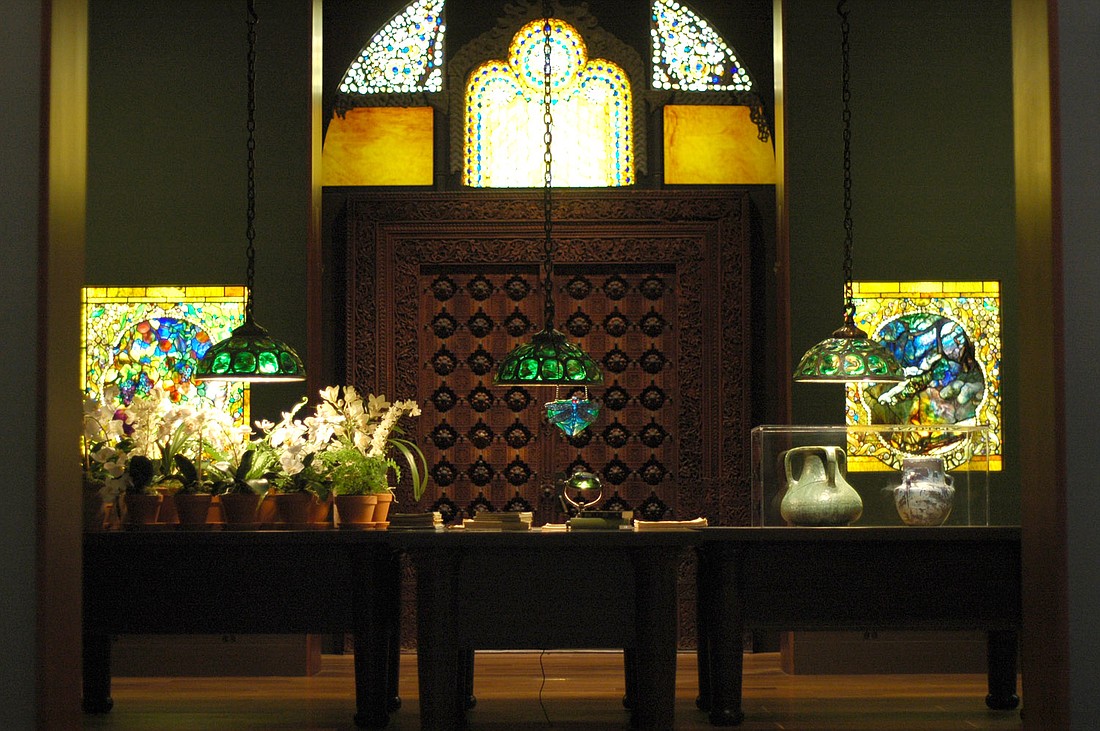- April 25, 2024
-
-
Loading

Loading

Laurence Ruggiero steps casually past a row of scaffolds and quips, “We’re still not quite ready” as he walks through the final construction of the biggest expansion of Winter Park’s biggest museum. It’s the final week before opening day, and the finishing touches have to be just right.
This isn’t just an expansion project, Ruggiero said. It’s a rebirth.
Come Saturday, Feb. 19, the Charles Hosmer Morse Museum of American Art will officially sprawl another 12,000 square feet, and within it will dwell a porthole in time.
“This isn’t just a museum,” museum director Ruggiero said. “This is our vision of Laurelton Hall.” Inside the walls of the new expansion, a sprawling cathedral of a mansion that burned to the ground in 1957 comes back to life.
That mansion was Laurelton Hall, built by Louis Comfort Tiffany. The world-renowned designer and glass artist took a passion for art and rendered it architecturally, completing the 84-room home on 600 acres along the north shore of Long Island, New York, in 1905. He lived in the home until his death in 1933.
“It was his ultimate work of art,” Morse Museum public affairs director Catherine Hinman said.
Laurelton Hall slowly declined in the years following Tiffany’s death, until fire consumed it 24 years later.
Its remains were scattered throughout the country, some of them auctioned off, other parts simply disappearing.
But Winter Park resident Hugh McKean, one of Tiffany’s students, worked with wife Jeannette to salvage much of the home’s decorative glass. Gradually piecing the ruins of the estate together, their work culminated in their first installation at the Morse Museum’s original incarnation at Rollins College in 1977. When the museum was moved and reopened on Welbourne Avenue in Winter Park, the glass moved with it.
Now even more of the original estate reunites in one building. Already the largest collection of Tiffany glass in the world, the Morse Museum now houses the largest representation of Laurelton Hall in the world, Ruggiero said.
Turning a corner where the old museum used to end, a long, expansive hallway stretches a hundred feet into the distance as ceilings soar more than 20 feet above. At the other end, a faint glow casts a rainbow of light from the floor. One of Tiffany’s more awe-inspiring vases of blown glass beckons visitors down that long hall before they turn left and their jaws drop.
“We were really hoping that would be the effect,” Ruggiero said of the dimly lit entryway to Laurelton Hall’s original art gallery, with a rainbow of light cascading through peacock-decorated glass over Indian teak doors that took hundreds of hours to carve by hand.
At the other end of the new wing, a terrace shaded by an ornate wood and glass ceiling atop Greek-style columns capped by glass daffodils dominates the open room, surrounded by clear floor-to-ceiling windows to give the feel of an open-air terrace.
“It’s bathed in natural light for the first time since 1957,” Hinman said. Out in the sun once again, the terrace lets visitors experience what it would be like to step outside into the gardens of Tiffany’s estate.
“I’m looking forward with bated breath to see it for myself tomorrow night,” Mayor Ken Bradley said Tuesday.
Starting this Saturday, guests will have a full month to experience the museum for free during public hours.
“We’re more than a museum,” Ruggiero said. “We try to tell the story behind it all. I think we did right by Tiffany.”
Did you know?
The Charles Hosmer Morse Museum of American Art’s new 12,000-square-foot wing was designed by RLF, a leading Winter Park-based architecture, engineering and interior design firm. Retired RLF President Jack Rogers, FAIA, said, “My father, James Gamble Rogers II, and Hugh McKean were contemporaries and shared a common passion for art and architecture. The two men went to Laurelton Hall after the fire in 1957 to help oversee the removal of treasurers from the ruins, for shipment to Winter Park. It seems particularly appropriate that the successor firm of RLF would work with the Museum to provide a new home for the Daffodil Terrace, together with associated art works and furnishings from Laurelton Hall.”